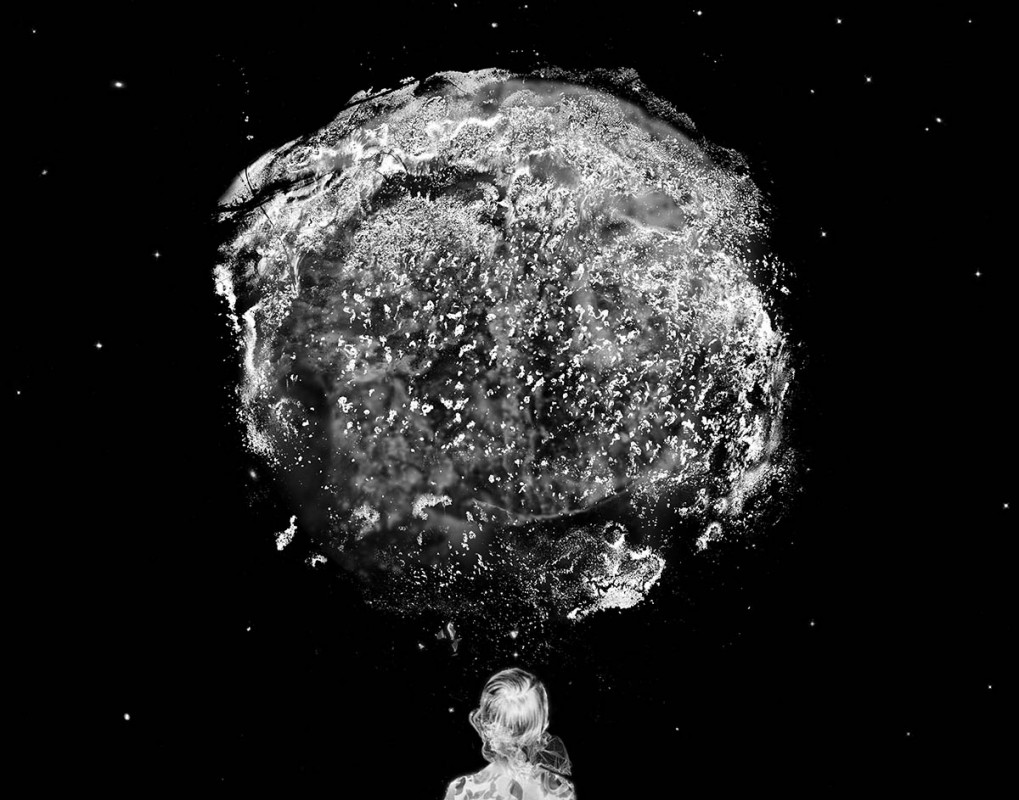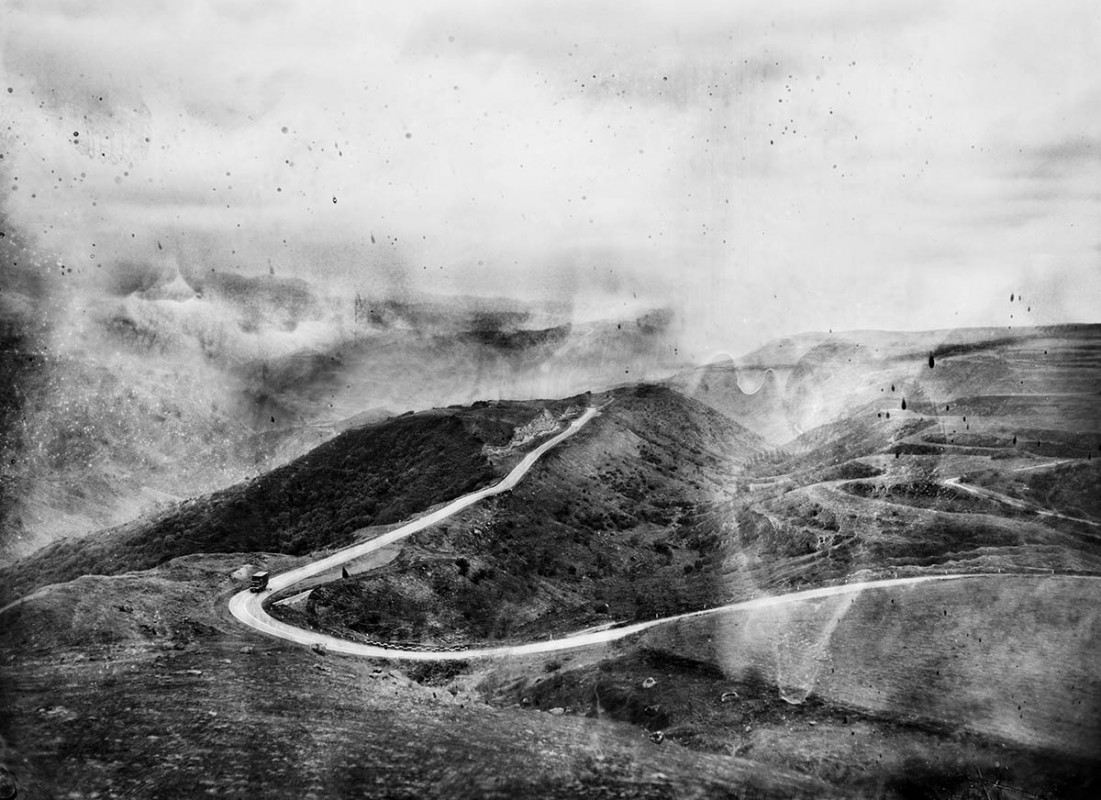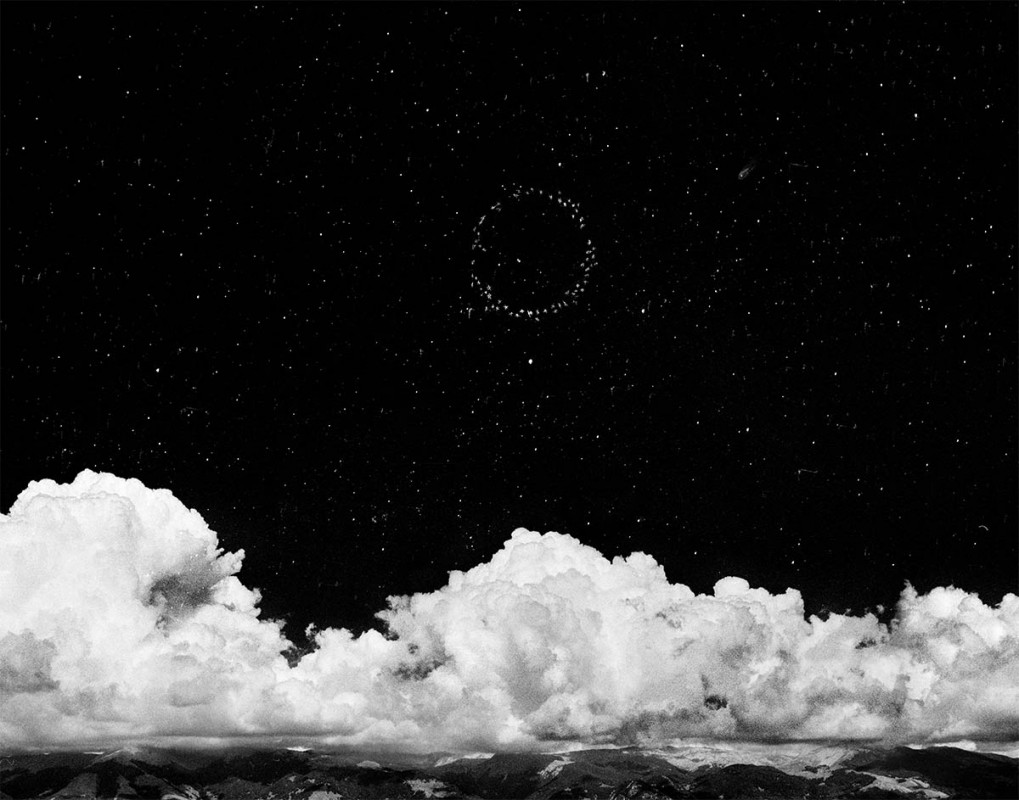
"Star Swallower" © Osheen Harruthoonyan
Osheen Harruthoonyan: Merging Macro and Micro
Osheen Harruthoonyan is an experimental photography artist, designer, and creative consultant from Canada. His work is inspired by a childhood in Iran, experiences as a young refugee in Greece, and family roots in Armenia, India and Persia. He is known for the unique chemistry-based technique for printing black and white film that helps his work stand out from the rest. Here, he talks about his story, what inspires him to create, and the unique approach he takes to print-making.
You’ve been receiving international acclaim for your unique approach to photography for almost 10 years now. How did you first get into photography?
I’ve always been very inspired by the ways that nature is telling stories around us – both visually, and in ways we can’t see. I started out my career working as a cinematographer, but found that I was always looking for alternate ways to tell stories that were moving to me, and where I would have total control and freedom on direction. Analog photography was always something I did, but I didn’t quit to pursue it full time until someone I knew was struck by lightning on a sunny day – literally. That day, I realized that you have to pursue your dreams while you still can. I spent the next five years experimenting over and over again until I landed on my own unique approach. A lot of people took chances on me back then, and I will be forever grateful for the opportunities that that gave me. It was pretty surreal to all of a sudden be in the news as a top photography show not to miss, or when the CBC and Vice! called to profile me, which lead to more press and museum exhibits like the Aga Khan Museum, or a group show at the Art Gallery of Mississauga with Janet Cardiff and George Bures Miller, whose work I really love and respect.
What drew you to BW photography specifically?
I wanted to create a world that existed in a slightly different reality than the one we know. To me, black and white photography is a beautiful way to do that, because it elicits different kinds of emotions than color. When I work with deep blacks or play with negative space, I can create a new interpretation of space, color and time – one that gives people a chance to step back and feel a different world, and to be given a chance to reconsider who they might be within it.
It is not possible to manipulate color film with chemistry in the same way that you can manipulate black and white film. However, I have recently been working with tri-colour gum over palladium and feel I can achieve the same emotions with color work as I do with black and white, through using a new process I’m developing. In colour work, using digital negatives, I can really alter contrast and saturation, and push the limitations of color. Mixed with the analogue alternative printing process, I am still able keep that otherworldly feeling where things don’t necessarily exist in any specific time or place.
© Osheen Harruthoonyan
You have pioneered this process that creates never before seen visual effects. Can you explain what that process is, and why it’s so unique?
I see photography as a perfect marriage of art and science - so why not treat the negative as a biological specimen? I shoot on 35mm, medium format and large format B+W film. I place the processed film in petri dishes or glass plates, and, with special chemistry I have created, proceed to carefully manipulate the film emulsion using a variety of specially designed tools. It’s like surgery on emulsion. I re-shape, collate, remove, replace pieces of the emulsion until I reach the final image. The negatives are then printed and processed in a traditional wet darkroom on fiber paper. Sometimes, I will laser expose a negative and create a whole new image, then take that negative, manipulate it and overlay onto another one. It’s almost like merging painting, printmaking and photography. The final printmaking stage is to tone with a combination of sepia, gold and selenium. Because no one has done this before, I get to figure it out as I go. The constant problem solving and discoveries are really exciting to me. I’ve been asked to provide private lessons for photographers locally and internationally, which has been really fun, as well as larger workshops at universities such as Concordia in Montreal. Lately, I’ve been receiving requests from companies and photography groups as well, and I’m going to be partnering with some organizations I’m excited about to bring some really fun new approaches to life in the future.
Inventors throughout history are known for unconventional paths. What was your path into this discovery?
Photography is a beautiful dance of light and chemistry. I spent several years studying, experimenting and manipulating film emulsion based on these two factors and, finally, decided to approach it like a scientist dissecting something in order to figure out exactly how to make it work - “what happens when you look deeper into the structure of a black and white negative?” Eventually, I understood it so completely that I could take that structure apart and re-form it into something that worked however I wanted it to.
I wanted to find ways of changing the atmosphere and emotion in photographs with more than just printing and exposure. I didn’t have the skills to print at a very high level until I met Bob Carnie, who is one of the top master printers in the world. He took me under his wing and really elevated my work. He taught me a lot about fine art printing developing and toning. I’m very grateful to have met some great people along the way that really invested time, knowledge and energy in my work and career. I’ve had some amazing experiences working on toning prints including one of the Vivian Meyer collections, as well as prints from John Lennon and Yoko Ono’s bed peace in Montreal. Jeannie Baxter, the managing director at Toronto Image Works, has always been very supportive of me, and is now one of my collectors. Ed Burtynsky has also always been extremely kind to me, in terms of giving me advice and insights to help develop my career. I’m very grateful to have had the opportunity to learn from them, and to have had the support of many others over the past decade, including collectors such at York and Seneca Universities, the Hudson’s Bay Collection in NYC, and people like Arsinee Khanjian, Henry Wolfond and Atom Egoyan etc.

© Osheen Harruthoonyan
What have been some of your greatest challenges?
I work with extremely delicate materials that easily break and fall apart, so it took me years to get the right ratios within my photo chemistry to keep the emulsions stable, and malleable enough to manipulate them the way I wanted them to. I spent months in my studio testing new recipes, throwing out negatives, and starting over. It’s not something I could have learned in a classroom - each result I needed I had to research, develop, and discover new solutions for.
What has been most rewarding?
My first solo show at Contact Photo Festival in Toronto blew up, this was back in 2008 – it was featured in several publications as being something not to miss, and I almost sold out. I remember watching that room fill up and just feeling joy and excitement. Being nominated for the Premier’s Award for Excellence in the Arts by Ed Burtynsky was also an experience that moved me greatly. My first big art fair in New York, I sold a photo to a private collector for exponentially more than I had in the past, without any local contacts or gallery representation, which was such a deeply rewarding moment just to see my work take on a life of its own and speak for itself that way in a new market. It’s also been really fun to be able to tell my story through interviews, and to collaborate on exhibits with incredible institutions like the Aga Khan Museum. Most recently, I had my work projected at the Marriot Courtyard Hotel in downtown Los Angeles – I haven’t been in LA for several years, and seeing my work up on huge screens was such a fun experience!
Your presence and work has been taking off in the United States, in particular, as of late - as a Canadian artist, what does that mean to you?
The US has such a beautiful history of innovation in media and the arts - from its (still growing) tech industry, to the work of great photographers like Penn, Mann, Tuberville, Abbott. It means a lot to me to be able to collaborate and share my own work with people who are known across cultures for having such incredible drive and ingenuity.
You have a lot of exciting things in the works, what can we expect to see from you in the coming months?
I’m collaborating with the Swedish Museum of Photography on an upcoming project they are putting on in New York, Tallinn and Stockholm that I am very excited about. I also have a group show in the works later this year in LA, alongside a few other global shows in development, one of which has the potential for a group traveling exhibit that will show in Toronto, New York, Houston, Dallas, Treviso, London, Paris, Lisbon and Dubai.

© Osheen Harruthoonyan
Your pieces now sell from upwards of $5,000.00 – a great feat in and of itself. What has that journey been like, for you?
You spend all this time as an artist wondering if you’re relevant. People used to say my work was too commercial, or not commercial enough – too artistic, or not contemporary enough. They said I didn’t fit well in any category, and I often felt like continuing with this new aesthetic and approach was totally crazy.
But then, the right people find you, begin to drive demand, and suddenly you have limited edition pieces with prices that are being driven up by individuals who believe in the work. To have been able to work through those emotions of doubt, thanks to people like these, and come out the other side is just really humbling, rewarding and such a privilege.
What goes into creating a single print?
I start off taking photos using black and white film, in mostly large and medium format, as well as 35mm. I overexpose and double expose certain parts of the negative on purpose to react with the chemistry I use in a specific way. Then, I process the film with Sprint developer, and hang them to dry. Afterward, I place the negative(s) under a magnify glass and I use the chemistry I developed to slowly sculpt and layer the emulsion. At this point, the negatives are floating in petri dishes, warmed to very specific temperatures. This process has to be extremely precise, especially when blending several negatives into one another - sometimes, it takes me six months to develop a single piece. Once the final desired image has been completed, I expose onto fiber based gelatin silver paper and process the prints in a wet darkroom, finishing off with gold, sepia and selenium toning for total permanence.
What is your advice to young photographers that want to create new and innovative techniques?
Embrace those happy accidents! My most successful projects have always been when I went with instinct, and saw where unforeseen results could take me.
Find people that inspire, motivate and believe in you, and work with them. I find that most people are very kind and generous with information, and are happy to pass on new skills and advice if you are willing to invest the time in learning. I wouldn’t have been able to take my work this far without the help and guidance of some very talented specialists and artists.
I’d also say work to streamline the administrative part of running a business. It’s important to stay on track and be organized as well, in order to free up time to produce your best creative work.
Website: https://www.osheenh.com/
Instagram: @o_s_h_e_e_n


